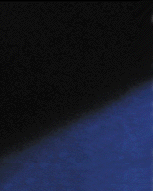|
|
 |
| This Month | Seoul in Breif | Specific Maps of Seoul | |||
| Where to Stay | What to Eat | What to Do | What to See | What to Buy | What to Know |
| Home >> Art & Craft >> Dwarfed tree |
The art of cultivating a dwarf tree has been compared to nurturing a human being. Just as parents must take special care of their children, the gardener needs to pay careful attention to the tree. What is dwarf tree? Nurturing the Dwarf Tree is a synthetic art encompassing several factors. The beautiful shape of the plant is cultivated through human labor and the leaves and a colorings of the plant are natural, thus the plant balances synthetic, as well as natural beauty. The Bun Jae method demonstrates the beauty of nature through the cultivation of plants in a pot. That is, people create artificially the beauty of great natural scenery without destroying the nature The history of Bun Jae, dwarf tree Bun Jae was popular in the period of Dang in China. Pictures painted on the wall in the tomb of prince 'Jang Hwae' before 8 BC are evidence of its early popularity. The exact period when Bun Jae was imported to Korea is unknown, but proof has been found that scholars cultivated Bun Jae in the period of Goryeo. Originating in China, the ancient Asian culture was exported to Japan through Korea. Nowadays it has been publicized to the rest of the world primarily by Japan, as the Japanese still take great interest in the art Appreciating Bun Jae Bun Jae is a synthetic art made thanks to human labor and nature. The curbed branches and leaves demonstrate both the labor of the cultivator and the beauty of the natural world. This outstanding work of art, can be appreciated both from the top down, and from a distance. Hints for appreciating the dwarf tree: ¢ºDon¡¯t touch - touching the plant makes it loose its beauty and freshness ¢ºDon¡¯t ask someone the price of the plant- traditional thinking dictates that beauty cannot be measured by price ¢ºDon¡¯t criticize the dwarf tree too quickly- you may change your opinion on the tree according to your state of mind. Dwarf Tree shapes: Straight trunk The trunk of some dwarf trees is straight with an annual ring. They have graceful branches that are thin on the top. The image displays an air of solemnity to the admirer. Curbed trunk Curbed trunk dwarf trees have many branches. These trees have a more organic feel to them and their artistic shape looks feminine while that of the straight trunk looks masculine. Bended trunk Tree trunks are bended due to the influence of the natural world such as the sea and wind. The trunks of these dwarf trees have an instable and dynamic shape reflecting the shapes of trees on the seashore or on a slope. If a tree hangs over a cliff, the trunk hangs down. If the water reaches the roots, we call this Ban Hyeon Ae. Muninmok - trees closely related to ancient literature Muninmok is cited in the Oriental artwork painted by literary man. This tree has graceful branches and a thin trunk. Twin trunk Trees are divided into two trunks at the root. The big trunk is called Ju Kan, literally meaning principal trunk, while the small trunk is called Jong Kan, subordinate trunk. The branches are also called couples branches; father & son branches; and brother branches. Ju Rip Ju Rip trees have roots which form several trunks. The thickness of trunks is well balanced, and the tree has a gentle shape. Planting Together Often several plants are placed in the same pot. This gives an impression of a forest scene. The plants should show stable, balanced shapes. They represent high, low, long, short, light, and dark aspects. Yeongeun Yeongeun mean thick roots that spread branches on each side. Myeong Ja trees are often cultivated in this shape. Change of pot The pot is changed two or three times per year. The best times to change the pot are between March and the beginning of May and September to the beginning of October. It is better to avoid changing the pot of plant in winter because it is difficult to control the plant under cold temperatures. Because the dwarf tree is cultivated in a small space in a pot, the roots can¡¯t stretch in it when the plant grows after several years. Thus, the plant looses freshness because the soil in a pot drains badly. Cultivators cut the roots and change the soil so that the trees grow well. The tack of the change of pot Gardeners do not sprinkle water on old soil in a pot that will be changed soon because if the soil is wet, it is difficult to pull out the root, and this causes damage to the small roots. Procedure of changing a pot plant Tap 2-3 times on the sides of the pot before pulling out the roots of the tree. Shake the soil away from the roots, be careful not to damage the small roots. Untangle the roots, cutting away any rotten roots, and cut one third of the length of the roots. The procedure of changing the pot may be differs slightly according to the kind of tree. Cut one third of the length of the roots of The Pine Tree, and between one third and one half of the roots of other trees. Then, plant in a new pot with the new soil. Fruit plants need chemical fertilizer so add this before re-potting. As for plants in small pots, it is a good tactic to pull out the pot after soaking it in a bucket full of water. |
 |
| Copyright ¨Ï 2001 What's On Communications Inc. All rights reserved. Write to Us post@whatsonkorea.com. |